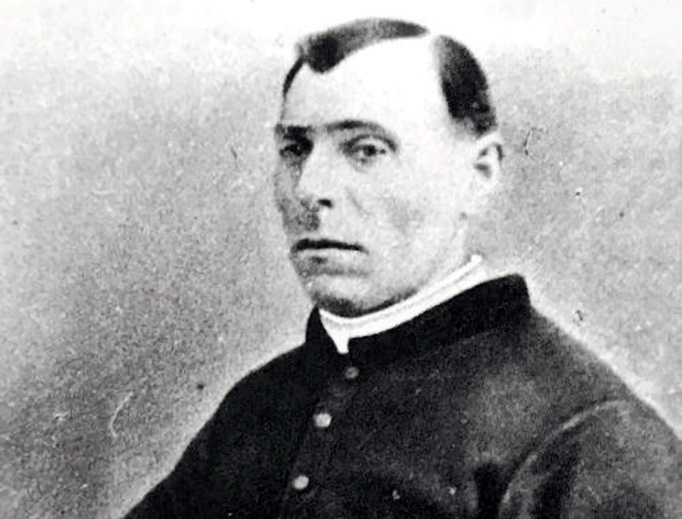Father José Mut: California’s Last Great Missionary
Father Mut served as pastor of Mission San Juan Capistrano from 1866-1886.

At this time when Father Junípero Serra, missionary apostle to California, and his fellow Franciscan priests are under attack by some for their alleged abuse of the California Indians, the story of Father José Mut is just one more example of how this was typically not the case. Far from being an abuser of the Indians, Father Mut is best remembered for his impassioned defense of the Indians’ rights.
Father Serra, who founded nine of California’s 21 missions, wrote, “To the missions should come only those who are ready for extreme suffering and misery. On that score, I can offer you an abundance.”
Such was the life of Father José Mut (pronounced moot), a Catalonian-born Spaniard known as “the last of the great missionary priests,” and pastor of Mission San Juan Capistrano, the seventh of the missions to be founded, from 1866-1886. Father Mut lived in austere conditions and traveled extensively to serve the Indian families entrusted to his care. His missionary travels, undertaken on foot and by horse-drawn buggy, took him as far south as Mission San Luis Rey (in today’s Oceanside, in northern San Diego County), inland to the San Antonia de Pala Mission and again north to Temecula and the neighboring ranchos.
Priests were scarce in Southern California in the 19th century, and Father Mut was valued and loved by the people he served. He baptized children, blessed marriages, prayed for the dead, instructed both children and adults and, of course, celebrated the Mass.
Father Mut also became well known for his defense of the Indians’ rights to property. Unscrupulous entrepreneurs and land speculators tried to take advantage of the local people, buying their land cheaply and turning around and selling it to railroads and other business interests for substantial profits. As Father Serra the century before had walked to Mexico City to secure a bill of rights for the Indians, Father Mut traveled to San Francisco — at great expense and difficulty — to lobby the government on behalf of the Indians (“in order to thwart the machinations of landsharks,” historian Father Zephyrin Engelhardt would write in 1922).
Longtime San Juan Capistrano resident Jose Juan Olivares said, “Father Mut was the lawyer (el abogado) of the poor. … Father Mut used to say, ‘It is easier for a camel to go through a needle’s eye than for a rich man to enter the Kingdom of God.’ He used to rail at [the] rich for their treatment of the poor.”
Father Mut lived in a room on the south wing of Mission San Juan Capistrano’s main courtyard. His simple and austere room served as his office, meeting area and bedroom.
Historian James Steele, in his Two Years in San Juan Capistrano, visited the Capistrano mission in the 1880s and offered the following description of Father Mut’s quarters:
By no possibility could any little chamber be more gloomy, unfurnished, generally dilapidated and desolate. A battered old pine table stood in the middle of the floor, and beside it a mended chair. Another, with a rawhide bottom, stood beside the door. There was no whole glass in one window and so the shutters were closed. An old and worn black priest’s coat hung against the wall and the cheapest variety of cotton umbrella leaned beside it. An ecclesiastical book lay on a table where it had last been used and close beside it a pair of steel-bound spectacles. The only sign of creature comfort, the one human weakness of the place, was a little bag of cheap tobacco and a wooden pipe that lay beside the spectacles and the book.
In 1870, insects had so infested this area that Father Mut had an area built above his room for sleeping. To reach it he used a rickety ladder, which he pulled up after himself at night. It was later replaced by a steep wooden staircase.
As the people he served were poor and could only offer meager stipends, Father Mut rented out rooms to raise his living expenses. A typical resident might pay $5 per month for his mission dwelling. Clocks were expensive, too, so Father Mut used a simple sundial to keep track of time.
Father Mut was also diligent in his protection of mission records. He stashed away important documents, which would not be discovered until decades later.
As a Spaniard, Father Mut was pleased that governance of California passed from Mexican to American hands in 1846. This ultimately led to the formal return of mission property to the Church by President Abraham Lincoln in 1865, 31 years after it had been seized and sold to private parties by Mexican governor Pio Pico. Had this not been the case, Father Mut and his fellow priests might not have been welcome in Capistrano.
In 1872, journalist Benjamin Cumming Truman visited the Capistrano mission and recalled sharing a drink with Father Mut: “Then Father Mut rolled a cigarette and handed it to me and poured out two glasses of aguardiente and said, as he put his own glass to his mouth: “I want to drink to the memory of a great man — Abraham Lincoln.”
While he was popular with his Indian parishioners, powerful business interests had long sought to remove Father Mut. They once asked his superior, Bishop Francisco Mora, to transfer him, but after receiving a counter-petition from Father Mut’s parishioners, Bishop Mora refused. In 1886, however, Father Mut’s opponents prevailed, and he left. He spent the last years of his life serving at Mission San Miguel Archangel (just north of Paso Robles), where he died at age 56.
- Keywords:
- california missions

















